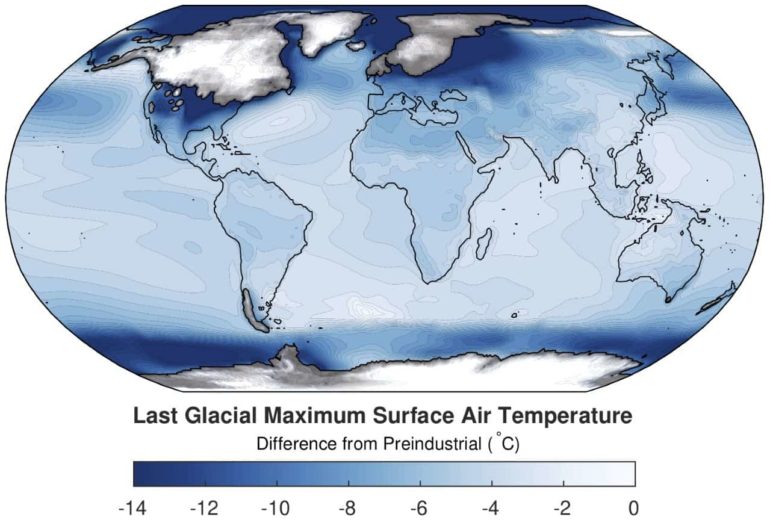A University of Arizona-led team has nailed down the temperature of the last ice age—the Last Glacial Maximum of 20,000 years ago—to about 46 degrees Fahrenheit (7.8 C).
Their findings allow climate scientists to better understand the relationship between today’s rising levels of atmospheric carbon dioxide—a major greenhouse gas—and average global temperature.
The Last Glacial Maximum, or LGM, was a frigid period when huge glaciers covered about half of North America, Europe and South America and many parts of Asia, while flora and fauna that were adapted to the cold thrived.
“We have a lot of data about this time period because it has been studied for so long,” said Jessica Tierney, associate professor in the UArizona Department of Geosciences. “But one question science has long wanted answers to is simple: How cold was the ice age?”
Tracking Temperature
Tierney is lead author of a paper published today in Nature that found that the average global temperature of the ice age was 6 degrees Celsius (11 F) cooler than today. For context, the average global temperature of the 20th century was 14 C (57 F).
“In your own personal experience that might not sound like a big difference, but, in fact, it’s a huge change,” Tierney said.
She and her team also created maps to illustrate how temperature differences varied in specific regions across the globe.
“In North America and Europe, the most northern parts were covered in ice and were extremely cold. Even here in Arizona, there was big cooling,” Tierney said. “But the biggest cooling was in



